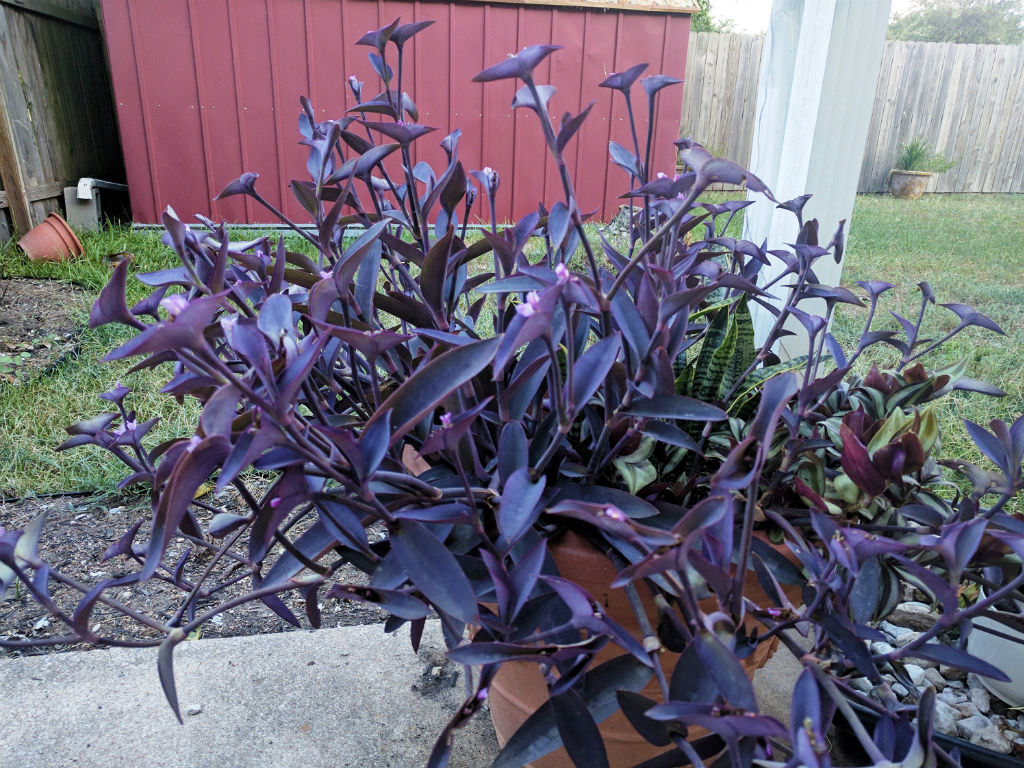
The Purple Heart plant is known to be drought-tolerant, making watering an easier chore.įull-grown Purple Heart plants will not need any water until the top 1-inch (2.5 cm) of soil feels dry to the touch.Īlthough they can survive for long stints without being saturated, these individuals still need a regular schedule. The plant, as a whole, can also thrive in partial shade outdoors, but the stems shift to a greener color. You’ll want to introduce your Tradescantia pallida to these bright conditions in increments over time to avoid foliage burn. Purple Heart plants that are placed in a place with plenty of light are more likely to hold on to that violet hue. Well, it can be mostly attributed to the amount of sunlight. 3-4 hours of direct light is fine as well and won’t harm the plant.Īn east or west-facing window would be the ideal location in your home.ĭo you ever wonder how those purple stems stay so brightly colored? Purple Heart plants prefer bright indirect light. Reduce to once a month in autumn and winter. Fertilize using a balanced fertilizer with an NPK of 10-10-10 or 5-5-5 diluted to half-strenght every two weeks in spring and summer. Water when the top 1-inch (1.5cm) of soil is dry about once a week. Keep the temperature between 46-79 ☏ (18-26 ☌). Provide lots of bright indirect sunlight. To care for Purple Heart plants use light well-draining soil using peat moss, perlite, and compost. In this article, I will list all the requirements in terms of plant care based on my personal experience with this plant as well as suggestions from other growers. Purple Heart Plant care is easy and you will certainly be successful in keeping them alive and rich in color when their basic needs are met. The blooms are pretty in themselves, ranging from violet to pink, but the stems and leaves are more vibrant. Surprisingly, most plant owners prefer to include this species in their collection for the foliage rather than the flowers. purpurea.The Purple Heart Plant or Tradescantia pallida, are known for their iconic purple stems that tend to grow out and trail. It is also known by two different scientific names: Setcreasea pallida and S. pallida is known by many common names, including Purple Heart, Wandering Jew, Inch Plant, and Purple Queen. Horticulturalists must take caution in disposing of cuttings from it, as it will grow invasively if cuttings are left on the ground. Purple Heart is especially easy to propagate in use as a houseplant, as it grows very easily from plant cuttings. The process by which plants purify air toxins is known as phytoremediation. This shows that Purple Heart has the potential to hold significant health benefits for people when used as an indoor house plant.

VOCs are toxic compounds released by many common household fixtures, including paint. According to a study involving twenty-eight different plant species, Purple Heart was shown to be the most effective at removing Volatile Organic Compounds (VOCs) from indoor air. Purple Heart is unique in that it is an effective air-purifying plant. It is often considered invasive in many areas. The wild variety of Purple Heart is native to the Gulf region of Eastern Mexico, although the plant is found in most temperate geographic locations due to heavy use in landscaping. Purple Heart is classified as an evergreen perinneal. The flower is small, three-petaled, and pale lavender or pink in color. It has distinctive lance-shaped, dark purple pigmented leaves.


Purple heart is a common type of spiderwort that is well known in landscaping use, especially for ground cover.


 0 kommentar(er)
0 kommentar(er)
